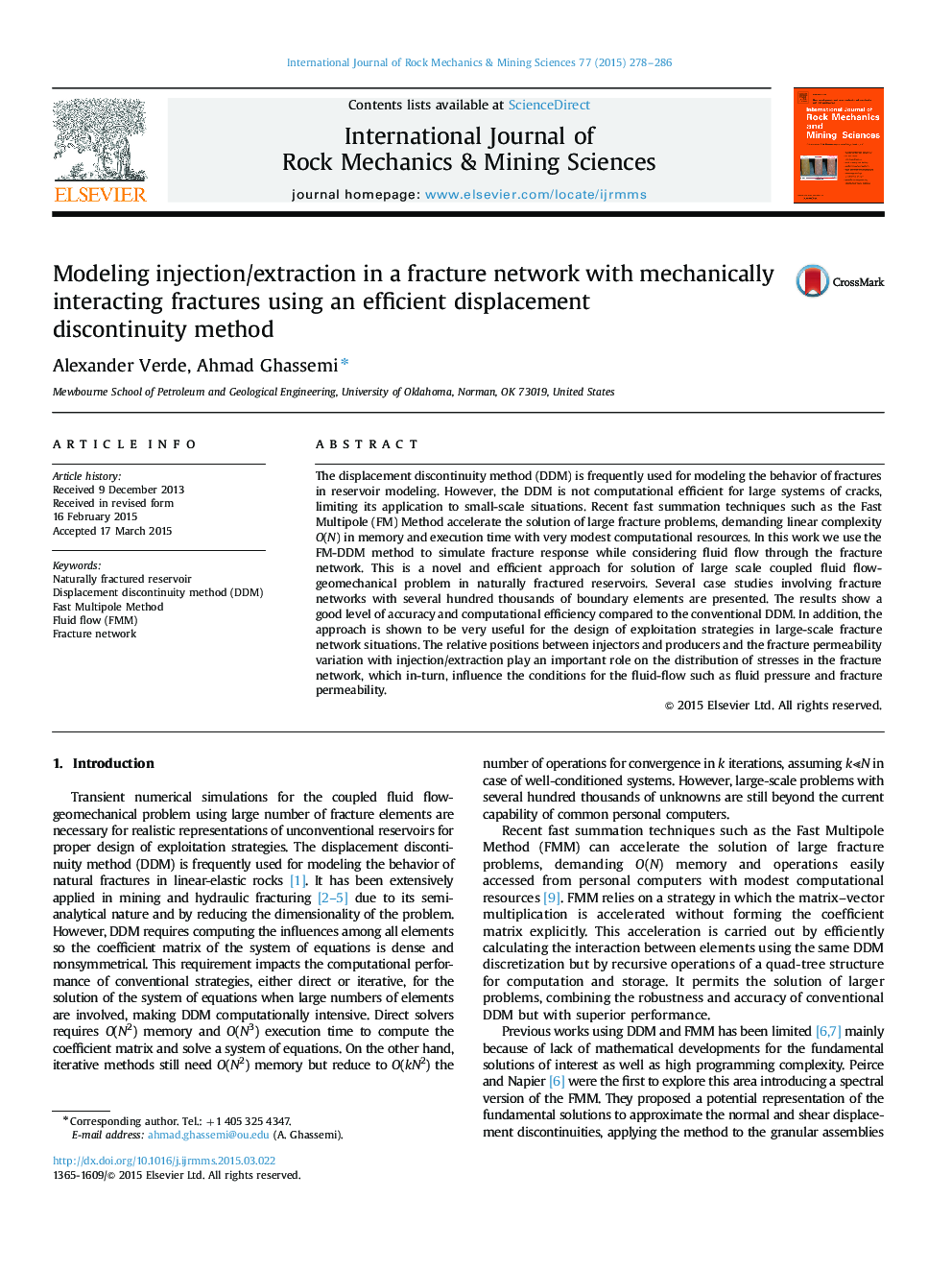| Article ID | Journal | Published Year | Pages | File Type |
|---|---|---|---|---|
| 7206546 | International Journal of Rock Mechanics and Mining Sciences | 2015 | 9 Pages |
Abstract
The displacement discontinuity method (DDM) is frequently used for modeling the behavior of fractures in reservoir modeling. However, the DDM is not computational efficient for large systems of cracks, limiting its application to small-scale situations. Recent fast summation techniques such as the Fast Multipole (FM) Method accelerate the solution of large fracture problems, demanding linear complexity O(N) in memory and execution time with very modest computational resources. In this work we use the FM-DDM method to simulate fracture response while considering fluid flow through the fracture network. This is a novel and efficient approach for solution of large scale coupled fluid flow-geomechanical problem in naturally fractured reservoirs. Several case studies involving fracture networks with several hundred thousands of boundary elements are presented. The results show a good level of accuracy and computational efficiency compared to the conventional DDM. In addition, the approach is shown to be very useful for the design of exploitation strategies in large-scale fracture network situations. The relative positions between injectors and producers and the fracture permeability variation with injection/extraction play an important role on the distribution of stresses in the fracture network, which in-turn, influence the conditions for the fluid-flow such as fluid pressure and fracture permeability.
Related Topics
Physical Sciences and Engineering
Earth and Planetary Sciences
Geotechnical Engineering and Engineering Geology
Authors
Alexander Verde, Ahmad Ghassemi,
